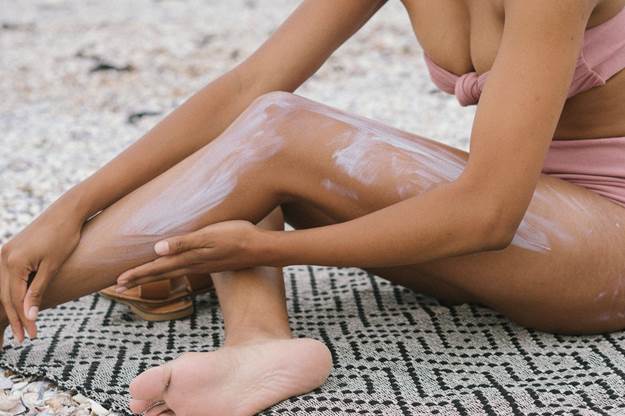Consider These Five Sunscreen Myths Debunked
By now, you’re probably well-versed in the basics of sunscreen: wear it daily, choose a sunscreen with SPF 30 or higher, and reapply every two hours. But even the most skin-savvy people can come across misinformation about sunscreen that leaves them vulnerable to sun damage, premature aging, and skin cancer.
To clear up these misconceptions, we’ve come up with a list of five sunscreen myths you can consider debunked.
Myth #1: “Sunscreen causes cancer.”
False. There is no reliable medical evidence to suggest that sunscreen causes cancer, while hundreds of studies show that SPF (sun protection factor) can protect the skin against harsh UV rays from sun exposure and tanning beds. Some people worry that common sunscreen ingredients, like oxybenzone, are not skin-safe. But oxybenzone (and other FDA-approved sunscreen ingredients) have been used for years with no statistically significant adverse side effects.
Myth #2: “I don’t have to wear sunscreen if I spend most of the day inside.”
False. Because sun damage can occur through the windows in your home, car, or office, you should still apply sunscreen to your exposed skin. There are two types of ultraviolet light that damage your skin and increase your skin cancer risk: ultraviolet A (UVA) and ultraviolet B (UVB). Window glass blocks UVB rays but not UVA rays. In fact, studies have shown that chronic exposure to UVA rays through windows may accelerate skin aging by five to seven years and can increase the risk of skin cancer.
Myth #3: “I have dark skin, so I don’t need to wear sunscreen.”
False. Dark skin is also susceptible to sun damage – it’s just harder to see. Skin cells respond to UV rays by releasing pigment in the form of a tan or a sunburn. These outcomes might be harder to spot on darker skin tones, but that doesn’t mean they’re not there. Regardless of your skin tone, apply sunscreen at least 30 minutes before going outside, and don’t forget to reapply.
Myth #4: “My sunscreen is SPF 70, so I don’t need to reapply.”
False. Regardless of the number on your sunscreen bottle, SPF only works for about two hours. The SPF number refers to how much protection you’re getting from UV rays. Even if you opt for an SPF 100+ sunscreen and apply it exactly as directed (something that’s surprisingly hard to do), sun exposure, your environment, sweat, and even clothing will eventually wear away at the sunscreen, which is why it’s best to reapply often.
Myth #5: “As long as I don’t burn, it’s healthy to get a little color.”
Really false! There is no such thing as a safe “base tan” or a “healthy tan.” UV radiation is a proven human carcinogen, and unprotected exposure to these rays significantly increases your risk of developing skin cancer. Tanning, like a sunburn, is caused by permanent DNA damage to the skin. The immune system will attempt to repair the damage done to UV-exposed skin cells, but the repairs are never perfect. Over time, repeated prolonged UV ray exposure can cause mutations in the affected skin cells, leading to premature aging or skin cancer.
Our providers use cutting-edge treatments like microdermabrasion, chemical peels, and laser treatments to reduce and reverse the effects of sun damage. These treatments require little to no downtime, so you can get back out there sooner (with sunscreen, of course). Call us at 337-235-6886 to schedule a consultation or skin exam with one of our providers.

